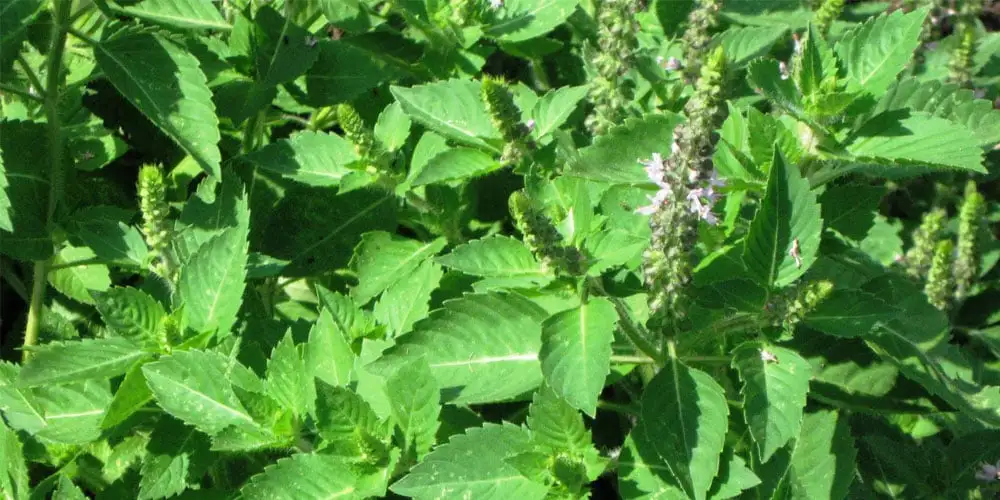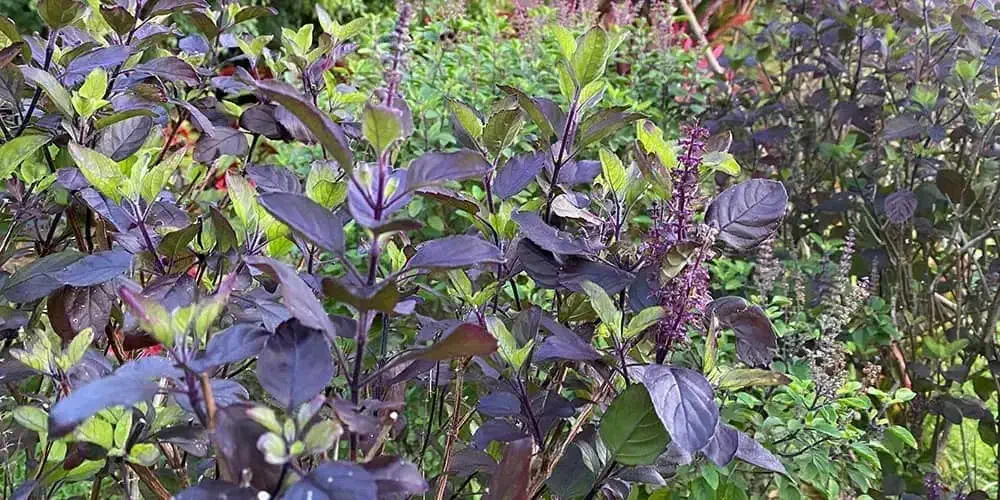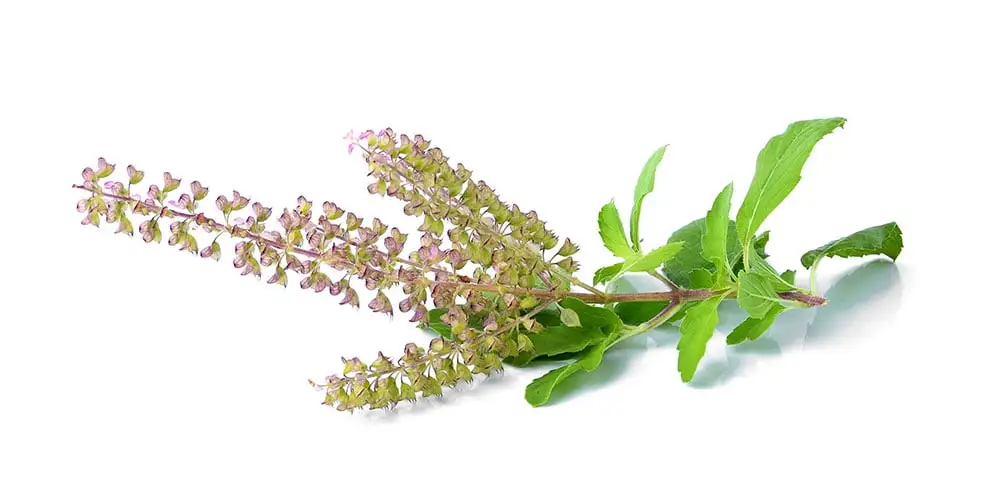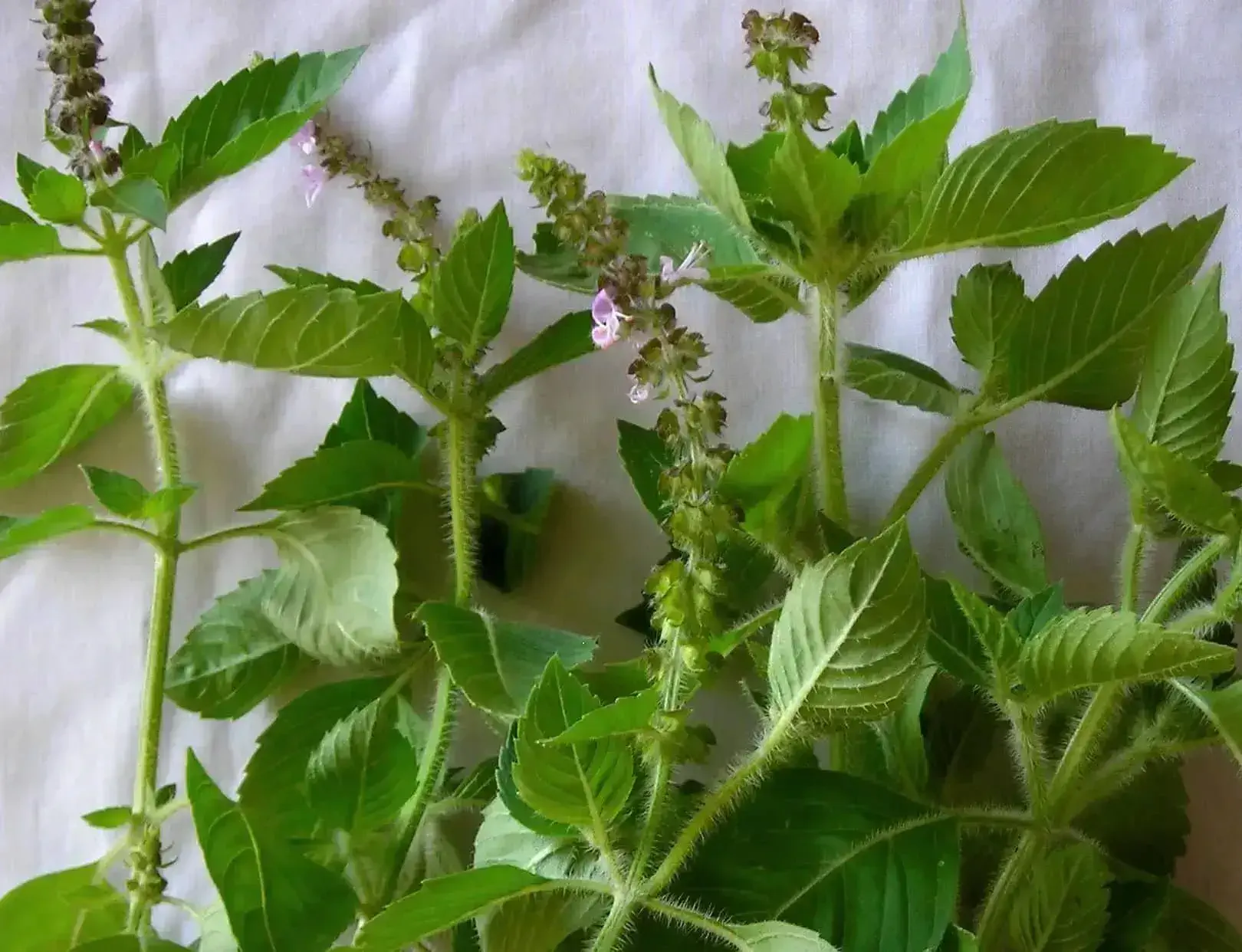This remarkable herb goes by various names, including Manjari, Krishna Tulsi, Trittavu, Tulshi, and Tulsi. Tulsi belongs to the Ocimum genus, a group encompassing approximately 60 basil species. In the vast Tulsi family, diverse varieties flourish across India, with many originating in the foothills of the Himalayas and extending their presence into the Middle East.
Tulsi thrives as an annual herb in temperate climates, reaching up to three feet in height, boasting a branched taproot. Its stems exhibit the distinctive square or quadrangular shape characteristic of Lamiaceae plants, displaying branching tendencies and a color spectrum from green to red, adorned with a fine layer of pubescence. The leaves, opposite in arrangement, adopt a simple, ovate, serrated, and petiolate form.
In a verticillaster inflorescence, Tulsi produces complete blue to purple flowers. Ayurvedic texts recognize four types of Tulsi:
Rama (Green Leaf) Tulsi
Also referred to as Sri or Lakshmi Tulasi, Ocimum tenuiflorum, or Ocimum sanctum, this variety is celebrated for its cooling, mellow taste. Green Leaf Tulsi can be found not only in India but also in China, Brazil, Eastern Nepal, Bengal, Bihar, Chatgaon, and several southern Indian states. It emanates a strong, distinctive aroma, with its leaves releasing a more pronounced fragrance when crushed compared to other Tulsi varieties.

Krishna (Purple Leaf) Tulsi
Known as Shyama Tulsi, this variation is recognized for its peppery, crisp flavor. With purple-colored leaves and dark stems, it’s a bit more challenging to find than its green counterparts. Purple Leaf Tulsi is renowned for its potential in treating throat infections, respiratory issues, nasal lesions, earaches, and skin ailments.

Vana (Wild Leaf) Tulsi
Vana Tulsi thrives naturally in the Himalayas and the plains of India, where it grows as a naturalized plant. This wild type of Tulsi is also cultivated and found growing throughout Asia and Africa.

Kapoor Tulsi
Kapoor Tulsi is a short, annual, and heavily-flowered plant originally introduced to the United States as “Holy Basil.” It is the most commonly cultivated type in the U.S., with easy growth requirements similar to standard basil. Kapoor Tulsi is also a significant attractor of bees.

When it comes to cultivation, Tulsi seeds germinate readily, typically sown in the spring and requiring adequate watering. Rich soil and full sunlight are essential for its growth, primarily suited to temperate climates.
Tulsi is highly regarded for its medicinal properties:
- It is commonly consumed as herbal tea.
- Karpoora Tulsi oil finds application in herbal toiletries and as an insect and bacteria repellent.
- Rama Tulsi is recognized as an effective remedy for Severe Acute Respiratory Syndrome. Its leaves’ juice provides relief from colds, fever, bronchitis, and cough.
- Tulsi oil is used as an ear drop.
- Tulsi has been effective against malaria and is known for its efficacy in addressing indigestion, headache, hysteria, insomnia, and cholera. Many people consume its fresh leaves daily.
Apart from its medicinal use, Tulsi holds a significant place in various cultural aspects:
- Tulsi beads, believed to possess physical and medicinal properties, are worn by many.
- Tulsi wood is considered more potent than any other gem and is thought to ward off negative influences. It is used to craft various jewelry items.
- Tulsi is a sacred plant, dear to Lord Vishnu, symbolizing purity and revered across the Indian subcontinent. It is commonly grown in households and temples, with its leaves employed in worship rituals.
- A Hindu household is often considered incomplete without a Tulsi plant in the courtyard, believed to promote longevity and lifelong happiness. Special Tulsi puja is performed during the Kartik month, marked by the Tulsi vivah (marriage) ceremony, wherein Tulsi is adorned and colored as a bride.
- Even today, people in India maintain potted Tulsi plants, watering them, lighting diya lamps nearby, and offering daily worship. Every part of the Tulsi plant, from its stems and leaves to its seeds and soil, is considered sacred.
- Ancient texts extol Tulsi as the conduit that connects people to the divine, emphasizing its role in spiritual well-being.
In conclusion, Tulsi is not just an herb; it is a profound cultural and medicinal treasure deeply ingrained in the hearts and traditions of India.

